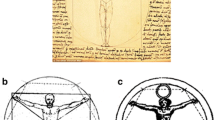Abstract
The present article offers analyses of important issues concerning design of vertical arcs by means of polynomial transition curves. In particular, two families of polynomial transition curves are considered, both of which are marked by versatility in shaping their geometry. This is an effect of a wide range of acceptable values that can be assumed by the parameter which governs mutual relations between the minimum radius, abscissa of the end point of the curve, and the slope of the tangent in the starting point. The article describes due procedures for designing vertical arcs, and compares them with traditional arcs which are formed by means of a second-degree parabola. The presented analyses lead to conclusions which have implications also for possible modernizations of already existing routes that may involve reconstruction of vertical arcs by means of polynomial transition curves.
Similar content being viewed by others
References
AASHTO (1994). “A policy on geometric design of highways and streets.” American Association of State Highway and Transportation Official, Washington DC.
Baykal, O., Tari, E., Coskun, Z., and Sahin, M. (1998). “New transition curve joining two straight lines.” J. Transp. Eng., Vol. 124, No. 5, pp. 337–345, DOI: 10.1061/(ASCE)0733-947X(1997)123:5(337).
Easa, S. M. (1994). “New and improved unsymmetrical vertical curve for highways.” Transp. Res. Record 1445, TRB, Washington D.C. DOI: 10.1139/l07-060.
Easa, S. M. (1998). “Three-arc vertical curve for constrained highway alignments.” J. Transp. Eng., Vol. 124, No. 2, pp. 163–171, DOI: 10.1061/(ASCE)0733-947X(1998)124:2(163).
Easa, S. M. and Hassan, Y. (2000a). “Development of transitioned vertical curve. I Properties.” Transp. Res. Part A, Vol. 34, No. 6, pp. 481–486, DOI: 10.1016/S0965-8564(99)00036-1.
Easa, S. M. and Hassan, Y. (2000b). “Development of transitioned vertical curve. II Sight distance.” Transp. Res. Part A, Vol. 34, No. 7, pp. 565–584. DOI: 10.1016/S0965-8564(99)00037-3.
Easa, S. M. (2002). “Geometric design.” In Civil engineering handbook, 2nd edition. Chapter 63. Ed. By Chen W.F., Liew J.Y., CRC Press, Boca Raton.
Easa, S. M. (2007). “New and improved single-arc unsymmetrical vertical curve for highways.” Can. J. Civ. Eng., Vol. 34, No. 10, pp. 1216–1221, DOI: 10.1139/l07-060.
Easa, S. M. (2010). “Length requirements for single-arc asymmetrical sag vertical curve for highways.” Can. J. Civ. Eng., Vol. 37, No. 6, pp. 834–841, DOI: 10.1139/L10-037.
GDDP (1995a). Wytyczne projektowania dróg I i II klasy technicznej (WPD-1), Generalna Dyrekcja Dróg Publicznych, Warszawa.
GDDP (1995b). Wytyczne projektowania dróg III, IV i V klasy technicznej (WPD-2), Generalna Dyrekcja Dróg Publicznych, Warszawa.
GDDP (1995c). Wytyczne projektowania dróg VI i VII klasy technicznej (WPD-3), Generalna Dyrekcja Dróg Publicznych, Warszawa.
Hu, W. C., Tan, F., and Barnes, A. (2004). “New solutions to optimum vertical curve problem.” J. Surv. Eng., Vol. 130, No. 3, pp. 119–125, DOI: 10.1061/(ASCE)0733-9453(2004)130:3(119).
Kobryń, A. (1999). Geometryczne kształtowanie krzywoliniowych odcinków niwelety tras drogowych, [Kobryń A. Geometric formation of curvilinear sections of vertical alignment], Rozprawy Naukowe nr 60, Białystok: Wydawnictwa Politechniki Bia ostockiej, 174 p. ISSN 0867-096X (in Polish).
Kobryń, A. (2002). Wielomianowe krzywe przejoeciowe w projektowaniu niwelety tras drogowych, [Kobryń A. Polynomial transition curves in the vertical alignment]. Rozprawy Naukowe nr 100, Białystok: Wydawnictwa Politechniki Bia ostockiej, ISSN 0867-096X (in Polish).
Kobryń, A. (2009). Wielomianowe kształtowanie krzywych przejoeciowych, [Kobryń A. Polynomial formation of transition curves]. Rozprawy Naukowe nr 167, Białystok: Wydawnictwa Politechniki Bia ostockiej, ISSN 0867-096X (in Polish).
Kobryń, A. (2011). “Polynomial solutions of transition curves.” J. Surv. Eng., Vol. 137, No. 3, pp. 71–80, DOI: 10.1061/(ASCE)SU.1943-5428.0000044.
Kobryń, A. (2014a). “New solutions for general transition curves.” J. Surv. Eng., Vol. 140, No. 1, pp. 12–21, DOI: 10.1061/(ASCE)SU.1943-5428.0000113
Kobryń, A. (2014b). “Transition curves in vertical alignment as a method for reducing fuel consumption.” The Baltic Journal of Road and Bridge Engineering, Vol. 9, No. 4, pp. 260–268, DOI: 10.3846/bjrbe.2014.32.
Lamm, R., Psarianos, B., and Mailänder, T. (1999). Highway design and traffic safety engineering handbook, McGraw-Hill, Professional Book Group, New York.
Meyer, C. F. and Gibson, D. W. (1990). Route surveying and design. Harper & Row Publishers, New York.
Pietzsch, W. and Wolf, G. (2009). Straßenplanung. 9. Auflage. Werner Verlag, Düsseldorf, Germany (in German).
Tari, E. and Baykal, O. (2005). “A new transition curve with enhanced properties.” Can. J. Civ. Eng., Vol. 32, No. 10, pp. 913–923, DOI: 10.1139/l05-051.
Weise, G. and Durth, W. U. A. (1997). Straßenbau, Planung und Entwurf. 3. Auflage. Verlag für Bauwesen, Berlin, Germany (in German).
Author information
Authors and Affiliations
Corresponding author
Rights and permissions
About this article
Cite this article
Kobryń, A. Vertical arcs design using polynomial transition curves. KSCE J Civ Eng 20, 376–384 (2016). https://doi.org/10.1007/s12205-015-0492-z
Received:
Revised:
Accepted:
Published:
Issue Date:
DOI: https://doi.org/10.1007/s12205-015-0492-z




